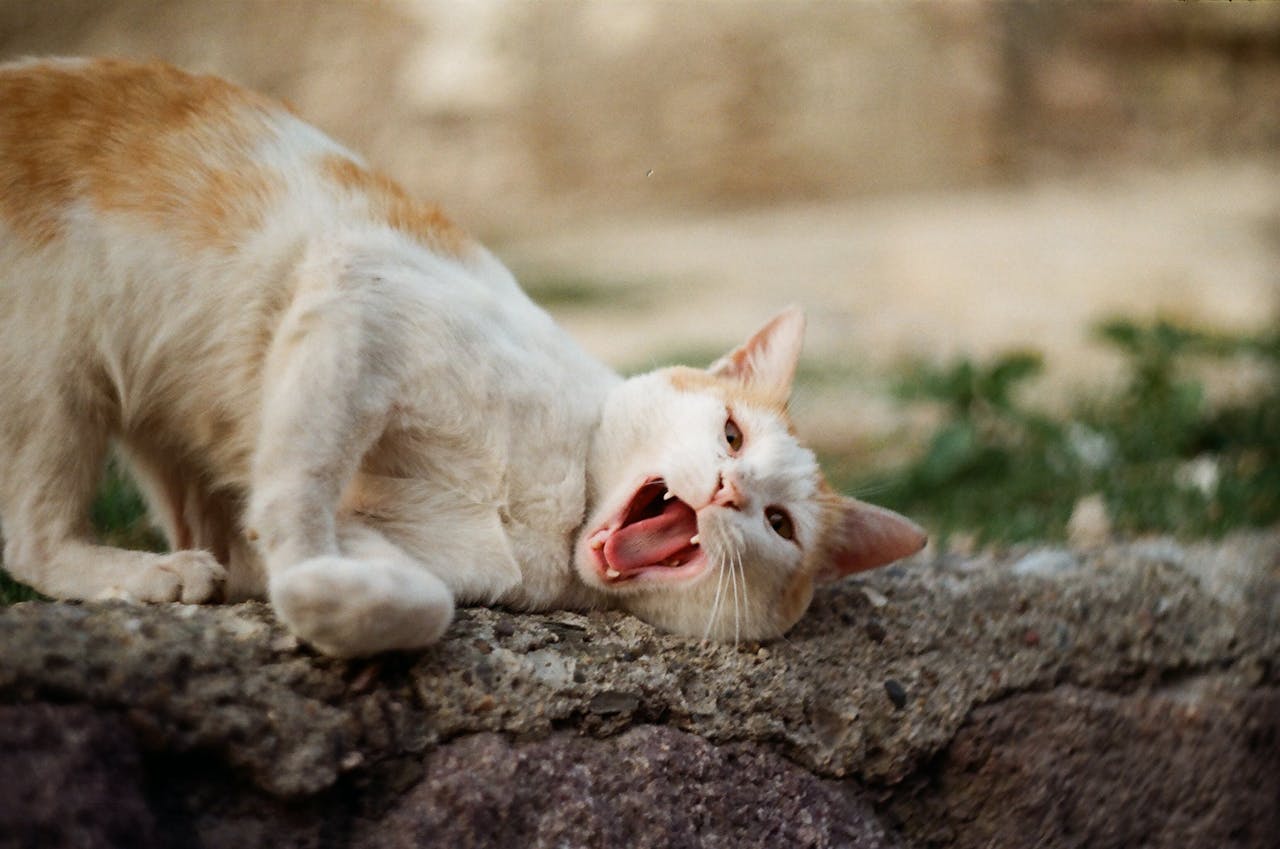Skin Diseases for Cats that Require Regular Vet Visits - Make Sure Your Furry Little Friend is Insured

Cats are mysterious creatures, known for their independent and enigmatic nature. However, their aloof exterior often conceals vulnerabilities, particularly when it comes to skin health. Skin diseases for cats can be a cause for concern, requiring vigilant attention, cat insurance and regular vet visits to ensure the well-being of your furry friend.
Navigating Common Cat Skin Diseases
In this comprehensive guide, we will explore some common skin conditions affecting cats, emphasizing the importance of regular veterinary care for timely diagnosis and effective management:
Fleas and Parasites
Fleas are not only a source of irritation for cats but can also lead to severe dermatological issues. Flea allergy dermatitis, a hypersensitivity to flea saliva, can cause intense itching, redness, and hair loss. Regular vet visits are crucial to monitor and manage flea infestations effectively. Prevention, through the use of flea preventatives recommended by your veterinarian, is key to keeping these pesky parasites at bay as is cat insurance for treatments that can otherwise prove costly.
Other parasites like mites can also wreak havoc on a cat's skin. Ear mites, for instance, can lead to intense itching and discomfort. Regular check-ups are necessary to catch such infestations early and administer appropriate treatments.
Allergies
Cats, like humans, can suffer from allergies, with skin being a common target. Environmental allergens, such as pollen, dust mites, or certain types of food, can trigger allergic reactions in felines. Allergic dermatitis often manifests as itching, redness, and sometimes even secondary infections due to excessive scratching.
Identifying the allergen can be a challenging task, requiring the expertise of a veterinarian. Regular vet visits are essential for allergy management, as they may involve allergen testing, dietary trials, and the prescription of antihistamines or immunosuppressants to alleviate symptoms.
With cat insurance, you can ensure your fur baby gets the treatment it needs when it needs it.
Ringworm
Contrary to its name, ringworm is not caused by a worm but by a fungus. This highly contagious skin infection can affect both cats and humans. Ringworm often presents itself as circular, red lesions with a raised edge, causing hair loss in affected areas. Regular vet visits are crucial to confirm the diagnosis and implement a treatment plan.
Treatment typically involves antifungal medications, topical ointments, and sometimes medicated baths. Additionally, an infected cat may need to be isolated to prevent the spread of the fungus to other pets or family members.
Bacterial Infections
Bacterial infections can take root in a cat's skin, especially if there are underlying issues such as wounds, scratches, or compromised immune function. Conditions like pyoderma can lead to pustules, redness, and discomfort. Regular vet visits are vital to diagnose bacterial infections early on and administer appropriate antibiotics.
Maintaining good hygiene, addressing any wounds promptly, and ensuring a healthy diet can contribute to preventing bacterial skin infections. Regular veterinary check-ups enable early detection, ensuring a prompt response to any emerging issues.
Seborrhea
Seborrhea is a skin condition characterized by an overproduction of sebum, leading to flaky, oily skin. It can be either dry (seborrhea sicca) or oily (seborrhea oleosa). Cats with seborrhea may experience itchiness, redness, and hair loss. Regular vet visits are essential to determine the underlying cause and develop a tailored treatment plan.
Management may involve medicated shampoos, dietary adjustments, and addressing any concurrent conditions contributing to seborrhea. Regular follow-ups with the veterinarian are crucial to monitor progress and make necessary adjustments to the treatment regimen.
Skin Cancer
While less common than in dogs, cats can also develop skin cancer. The most prevalent type is squamous cell carcinoma, often linked to sun exposure. Cats with light-colored fur and outdoor access are at a higher risk. Regular vet visits are crucial to monitor any suspicious skin lesions, lumps, or changes in pigmentation.
Early detection is key in managing feline skin cancer. Treatment options may include surgical removal of the tumor, radiation therapy, or other interventions, depending on the extent and type of cancer. Regular veterinary check-ups become vital for monitoring any potential signs of malignancy.
Acne
Yes, cats can get acne too. Feline acne typically presents as blackheads or pustules on the chin and lip area. While it might not always cause discomfort, severe cases can lead to inflammation and infection. Regular vet check-ups are essential to differentiate acne from other skin conditions, as well as to determine the underlying cause, which could range from plastic bowl allergies to stress.
Treatment may involve gentle cleansing, changing feeding bowls, and in more severe cases, antibiotics or topical medications. A veterinarian's guidance is crucial to managing feline acne effectively.
Eosinophilic Granuloma Complex
This condition encompasses several skin disorders, including eosinophilic plaque, eosinophilic granuloma, and indolent ulcers. These disorders are characterized by the presence of eosinophils, a type of white blood cell, in the skin. Symptoms include raised, ulcerated lesions often found on the lips, tongue, or inner thighs. Regular vet visits are crucial to accurately diagnose the specific type of eosinophilic granuloma complex and determine an appropriate treatment plan.
Management may involve steroids, immunosuppressants, or dietary changes. Veterinary monitoring is vital to assess the cat's response to treatment and make necessary adjustments.
Hormonal Imbalances: Endocrine-Related Skin Woes
Hormonal imbalances, such as hyperthyroidism or Cushing's disease, can manifest in skin changes for cats. Symptoms may include hair loss, thinning coat, or changes in skin pigmentation. Regular vet visits are crucial for diagnosing underlying endocrine disorders through blood tests and hormonal assessments.
Treatment involves managing the underlying hormonal imbalance, which may include medication, dietary adjustments, or surgery. Monitoring the cat's skin condition alongside hormonal levels is vital for a comprehensive approach to care.
Psychogenic Alopecia
Just like humans, cats can experience stress that manifests in physical symptoms, including hair loss. Psychogenic alopecia is a condition where cats excessively groom themselves, leading to patchy hair loss. Regular vet visits are essential to rule out other potential causes of hair loss and to address the underlying stressors.
Treatment may involve behavior modification, environmental enrichment, or the use of anti-anxiety medications. Monitoring the cat's progress and making necessary adjustments to their environment or treatment plan requires regular veterinary involvement.
PawDarling Pet Insurance: Safeguarding Your Feline Friend's Health and Happiness
Skin diseases for cats encompass a wide range of conditions, each requiring unique diagnostic approaches and tailored treatment plans. Regular vet visits are the cornerstone of preventive care, early detection, and effective management. Ensure your feline friend's well-being with PawDarling cat insurance – a paw-some way to safeguard against unexpected veterinary costs. Don't wait until it's too late; give your cat the protection they deserve – choose PawDarling today!
Get insurance plans with wide-ranging coverage options













